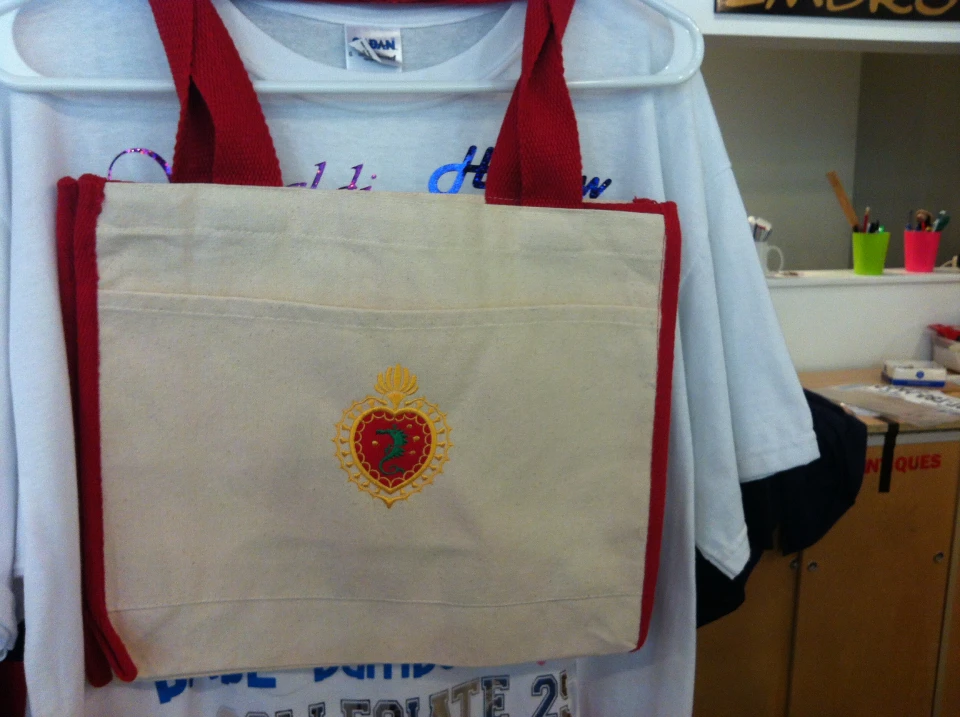The Art of Personalized Embroidery: Opening the Tricks to Creating Special and Unforgettable Layouts
Needlework, a craft soaked in practice and artistry, holds within its elaborate stitches the power to transform material into a canvas of one-of-a-kind expression. The secrets to developing customized embroidery layouts that captivate the eye and leave an enduring perception depend on a fragile balance of technique, creativity, and attention to detail. As we dig right into the globe of personalized needlework, we uncover the nuanced interaction between thread option, sew intricacy, and layout personalization that elevates a mere garment to a masterpiece. Join us on a journey with the art of custom-made embroidery as we decipher the mysteries behind crafting truly remarkable and distinctive creations.
Choosing the Right Needlework Threads
When picking embroidery threads, what crucial aspects should you take into consideration to make certain the finest outcomes for your custom designs? The choice of embroidery string is essential in establishing the last end result of your stitched layout.
In addition, the weight or thickness of the string plays a substantial duty in the look of the embroidery. Thicker threads can add dimension and texture to your design, while finer strings are optimal for intricate details and tiny message. In addition, taking into consideration the shade fastness and washability of the thread is crucial to make certain that your personalized layouts preserve their top quality and vibrancy over time. By meticulously assessing these variables and picking high-grade strings that satisfy your certain needs, you can improve the aesthetic allure and durability of your embroidered developments.
Checking Out Various Stitch Strategies
To dig into the world of 'Exploring Different Stitch Strategies', one need to grasp the details and nuances that each sewing method brings to the art of embroidery. Various stitch techniques not only include visual rate of interest but likewise add to the overall appearance and dimension of the layout. One preferred stitch technique is the satin stitch, which includes very closely packed parallel stitches to produce a smooth and glossy surface, suitable for filling out shapes and producing vibrant details.
On the other hand, the backstitch is a versatile method typically utilized for describing and adding great information. It entails sewing in reverse to create a solid line of embroidery. In addition, the French knot stitch adds a tactile component to styles, ideal for producing distinctive accents like blossom centers or decorative touches.
Checking out various stitch techniques permits embroiderers to have fun with light, darkness, and deepness within their styles, boosting the aesthetic appeal and imaginative quality of their needlework tasks. By mastering numerous sewing methods, one can open endless opportunities for creating special and unforgettable custom needlework items.
Incorporating Personalized Design Aspects
Having checked out the details of different stitch strategies such as the satin stitch, backstitch, and French knot, the emphasis now changes towards integrating personalized style components in custom-made embroidery jobs. Personalized style components play a vital duty in making needlework jobs absolutely unique and remarkable. One way to include personalization is by including initials, names, or substantial dates to the design. This not only includes a customized touch however additionally enhances the sentimental worth of the needlework item.
Another method to include customized design elements is by including signs or themes that hold unique definition to the recipient or mirror their passions and character. Integrating a favorite blossom, pet, or hobby-related icon can make the needlework layout much more purposeful and personalized. In addition, picking shades that reverberate with the recipient or straighten with the intended motif can further improve the customization of the needlework project.
Mastering the Art of Color Sychronisation
One trick element of shade coordination is understanding color theory. This consists of knowing how different shades interact with each other, the emotions they communicate, why not try this out and how they can be combined to produce visually attractive layouts. By applying shade concept concepts, embroiderers can develop harmonious shade palettes that enhance the overall look of the layout.
Furthermore, focusing on contrast is critical in shade sychronisation. Making use of contrasting colors can help specific elements of the layout pop, boost legibility, and develop an aesthetically dynamic needlework item. By mastering the art of color sychronisation, embroiderers can raise their designs and develop remarkable pieces that reverberate with clients and customers alike.
Enhancing Texture With Advanced Embroidery Stitches

French knots, for instance, are perfect for including little, increased dots to your layout, simulating the look of grains or creating a distinctive surface area. Bullion knots, on the other hand, can be used to develop twisted, ropelike components that include a lavish feel to the needlework. Seed stitching entails small, scattered stitches that can fill out locations with a polychromatic texture, while turkey work creates cosy, dimensional accents evocative pet fur or vegetation. Explore these innovative needlework stitches permits you to push the boundaries of typical needlework and develop absolutely one-of-a-kind and visually appealing appearances in your designs.
Conclusion
Finally, the art of custom needlework includes a i thought about this combination of picking the best strings, discovering various stitch techniques, integrating personalized design aspects, understanding color coordination, and boosting appearance with sophisticated stitches. By understanding and implementing these crucial elements, embroiderers can create unique and unforgettable designs that display their imagination and ability. Embroidery lovers can unlock the secrets to developing gorgeous and bespoke pieces that stand out and leave a long-term impact.